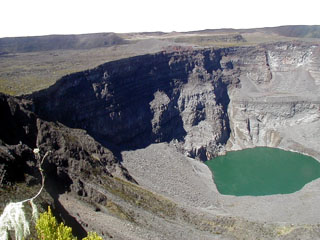Report on Karthala (Comoros) — 28 September-4 October 2022
Smithsonian Institution / US Geological Survey
Weekly Volcanic Activity Report, 28 September-4 October 2022
Managing Editor: Sally Sennert.
Please cite this report as:
Global Volcanism Program, 2022. Report on Karthala (Comoros) (Sennert, S, ed.). Weekly Volcanic Activity Report, 28 September-4 October 2022. Smithsonian Institution and US Geological Survey.
Karthala
Comoros
11.75°S, 43.38°E; summit elev. 2361 m
All times are local (unless otherwise noted)
According to the Direction Générale de la Sécurité Civile (DGSC) – Comores on 4 October, the Observatoire Volcanologique du Karthala (OVK) reported that activity at Karthala had significantly declined during the previous few days. OVK recommended that the Alert Level remain at Yellow (the second lowest level on a four-level scale).
Geological Summary. The southernmost and largest of the two shield volcanoes forming Grand Comore Island (also known as Ngazidja Island), Karthala contains a 3 x 4 km summit caldera generated by repeated collapse. Elongated rift zones extend to the NNW and SE from the summit of the Hawaiian-style basaltic shield, which has an asymmetrical profile that is steeper to the S. The lower SE rift zone forms the Massif du Badjini, a peninsula at the SE tip of the island. Historical eruptions have modified the morphology of the compound, irregular summit caldera. More than twenty eruptions have been recorded since the 19th century from the summit caldera and vents on the N and S flanks. Many lava flows have reached the sea on both sides of the island. An 1860 lava flow from the summit caldera traveled ~13 km to the NW, reaching the W coast to the N of the capital city of Moroni.

